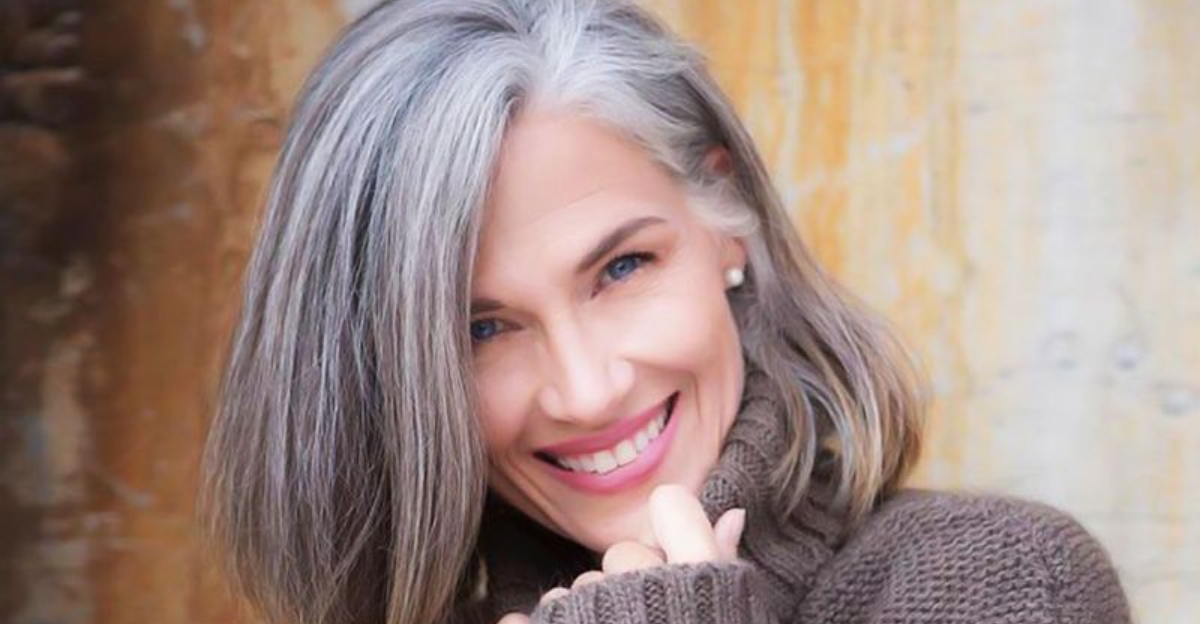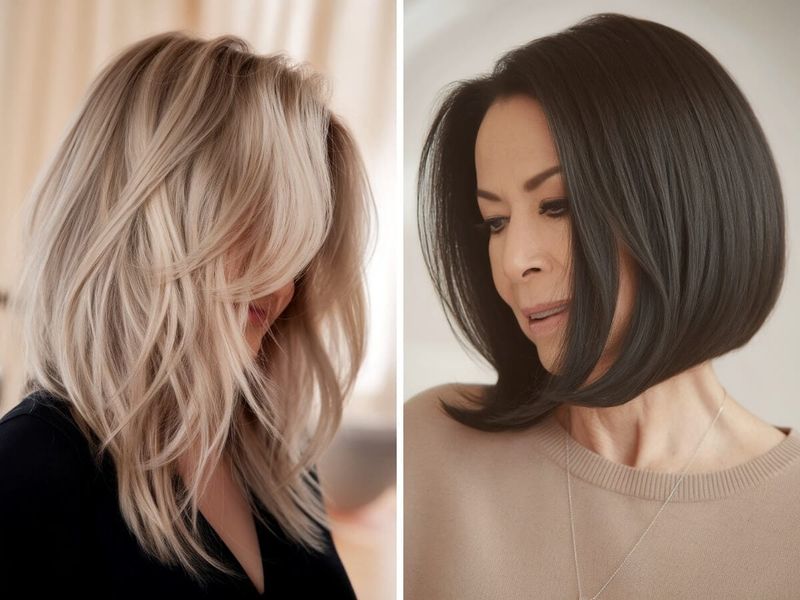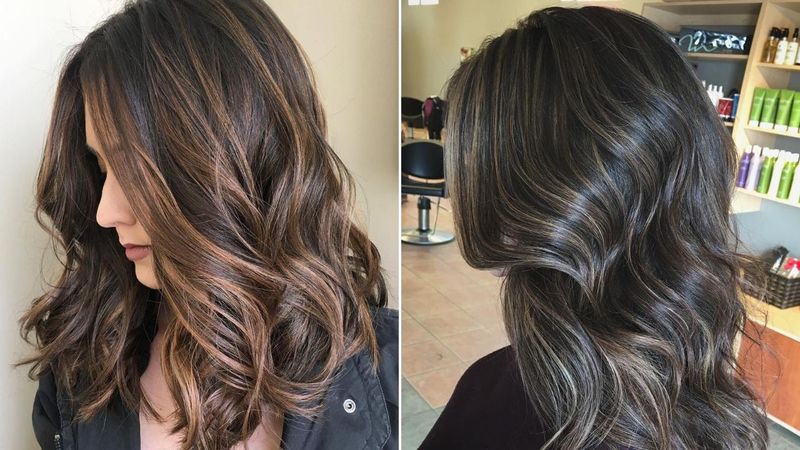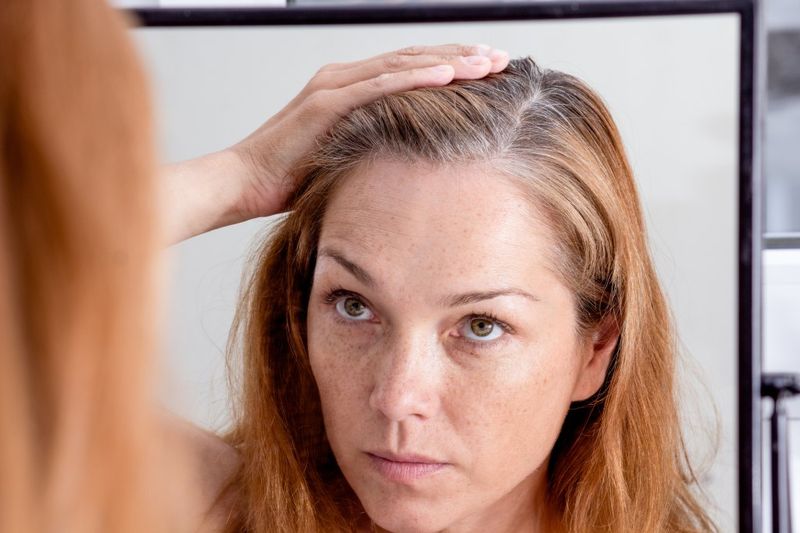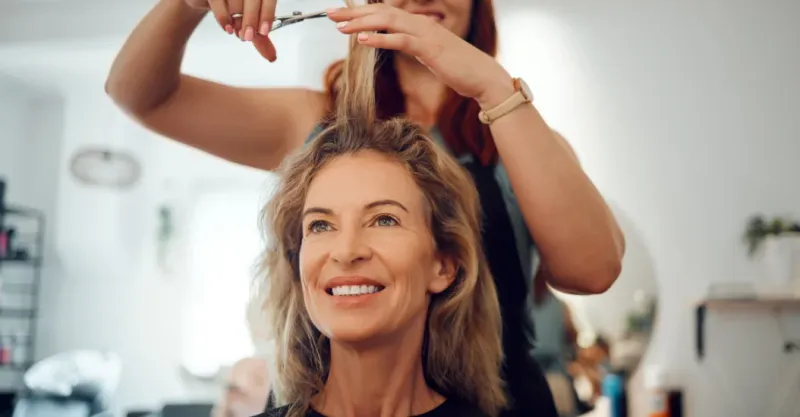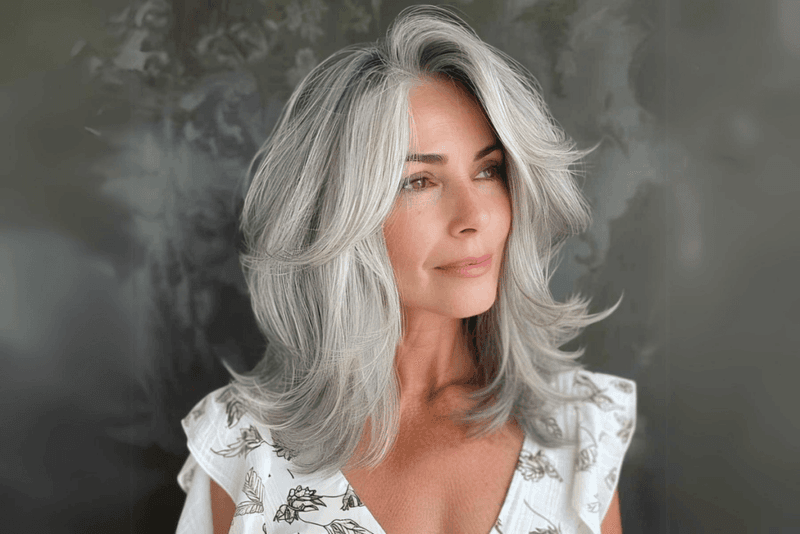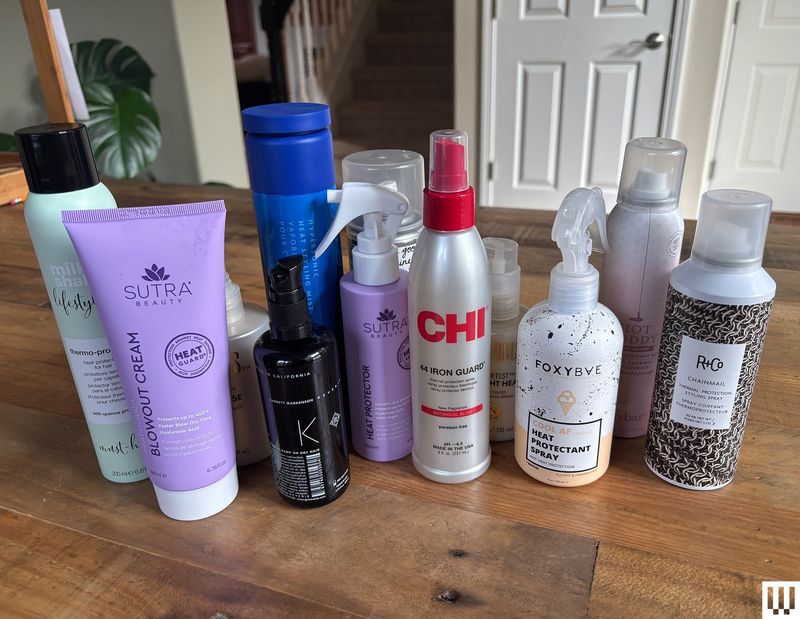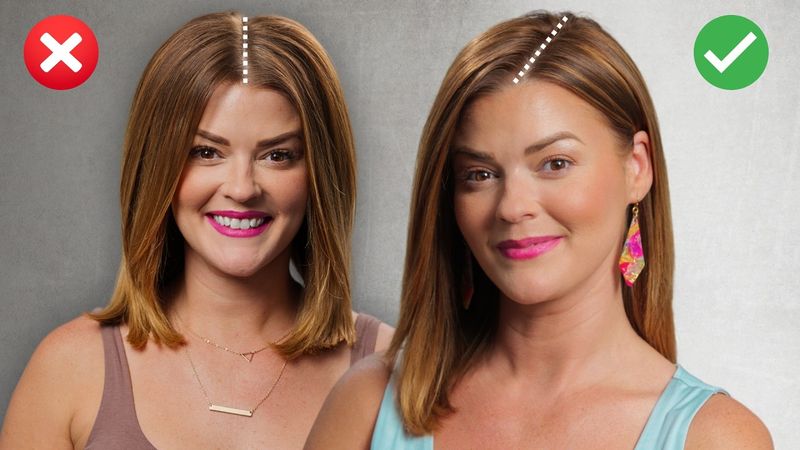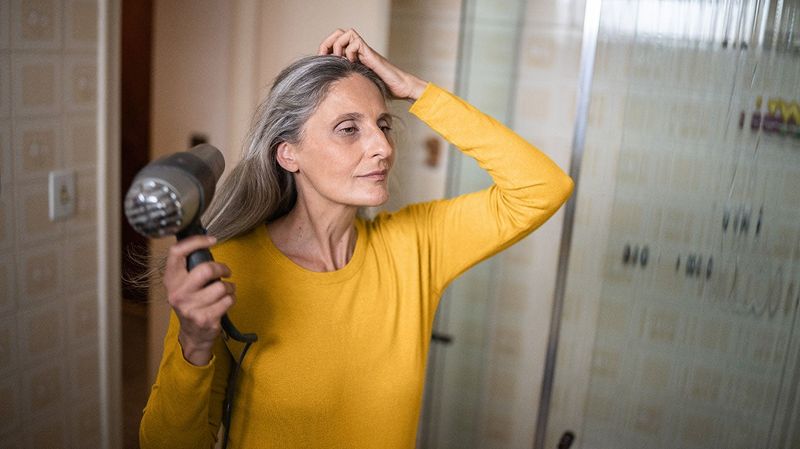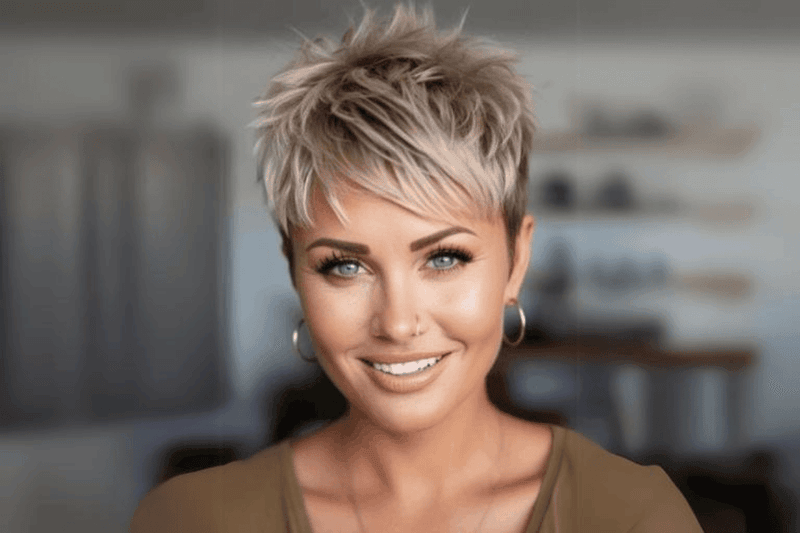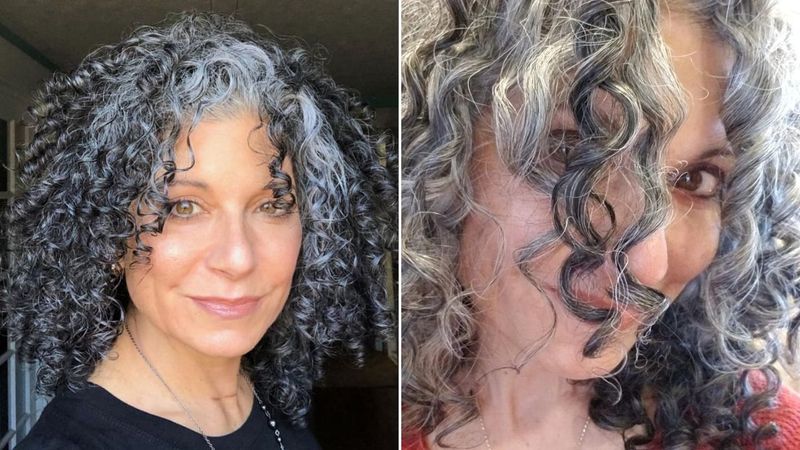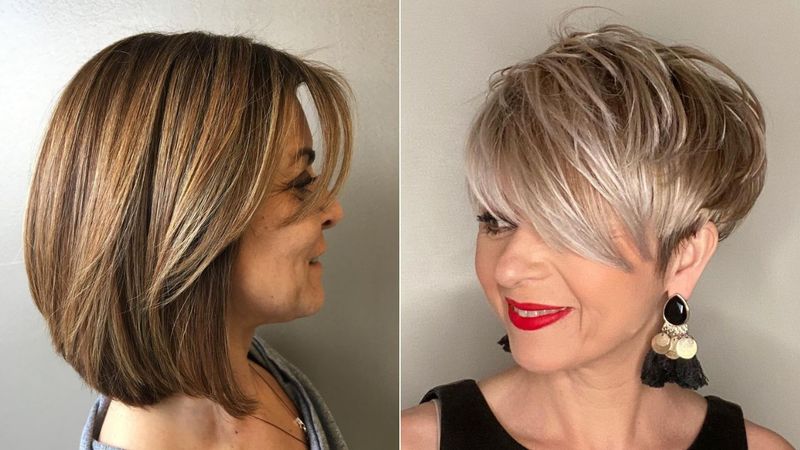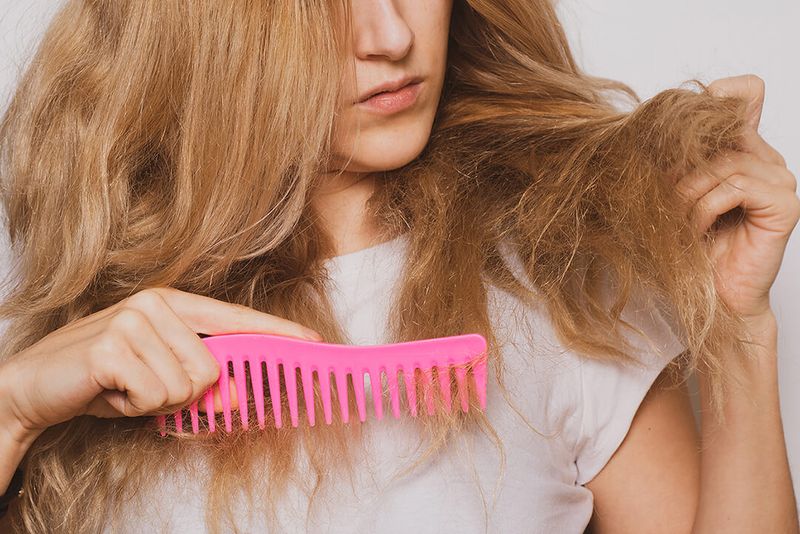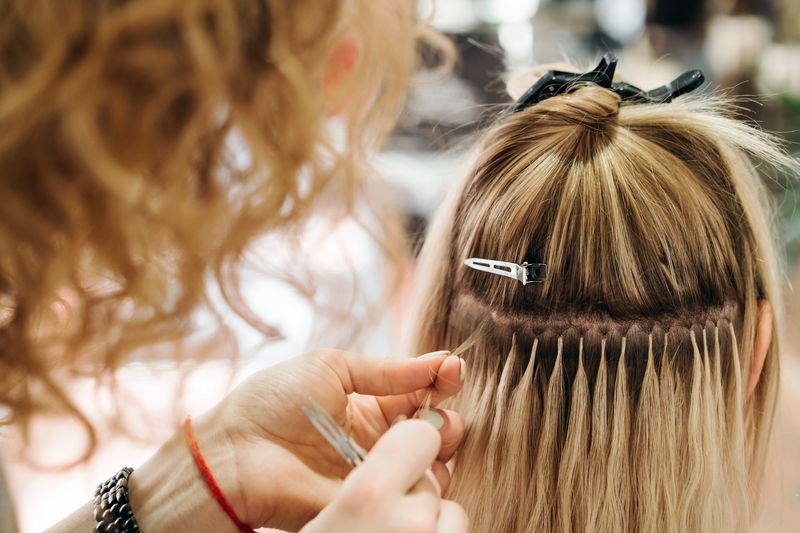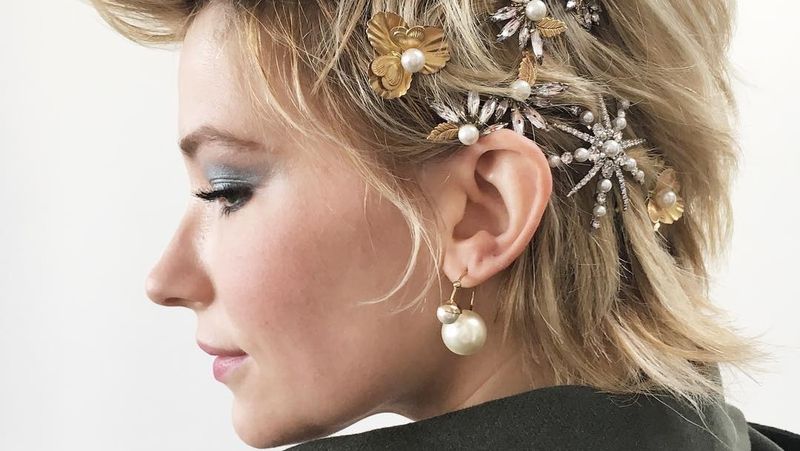Your hair speaks volumes about your age, even when your face stays youthful. Many women over 50 unknowingly cling to outdated styling habits that add years to their appearance. Small changes to your hair routine can dramatically transform how others perceive your age and vitality.
1. Sticking with the same hairstyle for decades
Hair that’s frozen in time becomes your personal time capsule—and not in a good way! Styles from your youth rarely complement your current face shape and skin tone. Update your look every few years for a fresh, modern appearance.
2. Clinging to super-long locks
Waist-length hair after 50 often pulls features downward, creating a droopy effect. Most stylists recommend a length that hits somewhere between the collarbone and shoulders for a more lifted, youthful appearance.
Related: -7 Straight-Hair Problems No One Talks About And 8 Easy Fixes That Shine
3. Choosing severe, one-length cuts
Blunt, straight-across cuts without layers can look harsh against mature skin. Soft layers create movement and dimension that naturally flatter aging faces. Even subtle layering can make a dramatic difference in how youthful your style appears.
4. Using harsh black hair dye
Jet black hair against mature skin creates stark contrast that highlights every line. Softer, multidimensional colors—think warm browns or subtle highlights—blend naturally with aging skin tones and create a more youthful glow.
5. Ignoring gray roots for too long
That stark line of demarcation between colored hair and gray regrowth instantly ages you. Schedule touch-ups every 3-4 weeks, or consider transitioning to a low-maintenance silver blend that requires fewer salon visits.
6. Embracing the helmet head
Stiff, overly sprayed styles that don’t move look dated and aging. Today’s most flattering styles have natural movement and touchable texture. Try lighter-hold products that control without creating that dreaded helmet effect.
7. Neglecting regular trims
Split ends travel up the hair shaft, making even the most expensive color look dull and damaged. Booking trims every 6-8 weeks maintains healthier ends and preserves your style’s shape, even if you’re growing it out.
8. Over-teasing for volume
That 1980s-style teased crown creates an outdated silhouette that ages you instantly. Modern volumizing products and blow-drying techniques create natural-looking lift without damaging hair or creating that telltale “big hair” look.
9. Using the wrong shampoo for aging hair
Hair changes dramatically after 50—becoming drier, thinner, and more fragile. Regular shampoos can strip natural oils from already-dry strands. Moisturizing, sulfate-free formulas specifically designed for mature hair prevent unnecessary damage and dryness.
10. Flat ironing without heat protection
Heat styling without protection causes irreversible damage to already-fragile mature hair. Always apply a heat protectant before using hot tools. Consider embracing your natural texture more often to minimize unnecessary heat exposure.
11. Choosing the wrong part
Center parts can emphasize facial asymmetry that develops with age. Experiment with slightly off-center or side parts that create a more flattering frame for your face. The right part can literally lift your features!
12. Skipping conditioner to avoid “weighed down” hair
Mature hair needs moisture more than ever, even if you’re worried about limp locks. Lightweight, volumizing conditioners designed for fine hair can provide essential hydration without sacrificing body. Focus application on mid-lengths to ends.
13. Relying on outdated styling tools
Those hot rollers from 1995 aren’t doing you any favors. Modern styling tools have temperature controls and ceramic or tourmaline technology that cause less damage. Investing in quality tools specifically designed for mature hair pays dividends.
14. Choosing dated, boxy short cuts
Short doesn’t have to mean matronly! Those one-size-fits-all short cuts from decades past often look dated. Modern pixies and short styles feature softness around the face and neckline, with texturized layers that create movement.
15. Refusing to adapt to changing hair texture
Fighting your hair’s changing texture wastes time and causes damage. Many women notice increased wave or curl after 50 due to hormonal changes. Learning to work with—not against—your new texture creates more natural, flattering results.
16. Skipping regular scalp care
Healthy hair starts with a healthy scalp, especially after 50 when oil production decreases. Regular scalp exfoliation and moisturizing treatments remove buildup and stimulate circulation. Think of scalp care as an extension of your skincare routine.
17. Choosing unflattering bangs—or avoiding them entirely
The right fringe can disguise forehead lines and create a youthful frame for your face. Soft, side-swept or wispy bangs usually work better than blunt, heavy styles. Don’t rule out bangs after 50—just choose the right style!
18. Overprocessing with multiple chemical treatments
Coloring, perming, and relaxing simultaneously creates a triple threat to hair health. Mature hair can’t withstand multiple harsh processes. Space out chemical treatments by at least two weeks, or better yet, simplify your routine entirely.
19. Wearing obviously fake hair pieces
Poorly matched hair extensions or toppers can look more aging than the thinning hair you’re trying to disguise. If you use hair additions, invest in quality pieces custom-colored to match your hair perfectly.
20. Ignoring the power of hair accessories
Many women abandon hair accessories after a certain age, missing opportunities to elevate their style. Modern, sophisticated clips, headbands, and scarves can add interest to simple styles while disguising problem areas like thinning temples.

